DAYBREAK













Dear readers,
As the year comes to a close, we reflect on both the travesties and triumphs shared by humanity these past twelve months and treasure the symbolism of daybreak as it takes on extraordinary significance in the public health landscape. During the production of this issue, a whirlwind of events has unsettled the world, ushering in a new series of humanitarian crises, natural disasters, global conflicts, and infectious diseases—from the catastrophic Israel-Hamas war and the mounting casualties left in its wake to the devastating wildfires that ravaged Maui.
But amongst the ashes, humanity arose time and time again, re-igniting hope and demonstrating the strength of resilience and collective effort. After three long years, the WHO declared an end to the COVID-19 emergency, signaling our gradual return to normalcy and a reminder of lessons learned. Quickly after, the Monkeypox crisis came to an end, just six months after it became a global concern—a success story that came to fruition due to a highly coordinated public health response. Five of the six WHO regions have also been ruled free of wild poliovirus, with two of the three strains having been globally eradicated.
“Daybreak” reflects this collaborative spirit—a reminder that each day presents an opportunity to build a healthier, more inclusive world. As we delve into the narratives, insights, and discoveries within the realm of public health in this edition, let us embrace the spirit of daybreak and remain steadfast in our commitment to creating a brighter, healthier future for generations to come.
Your advocate,
 Elena Tung
Elena Tung
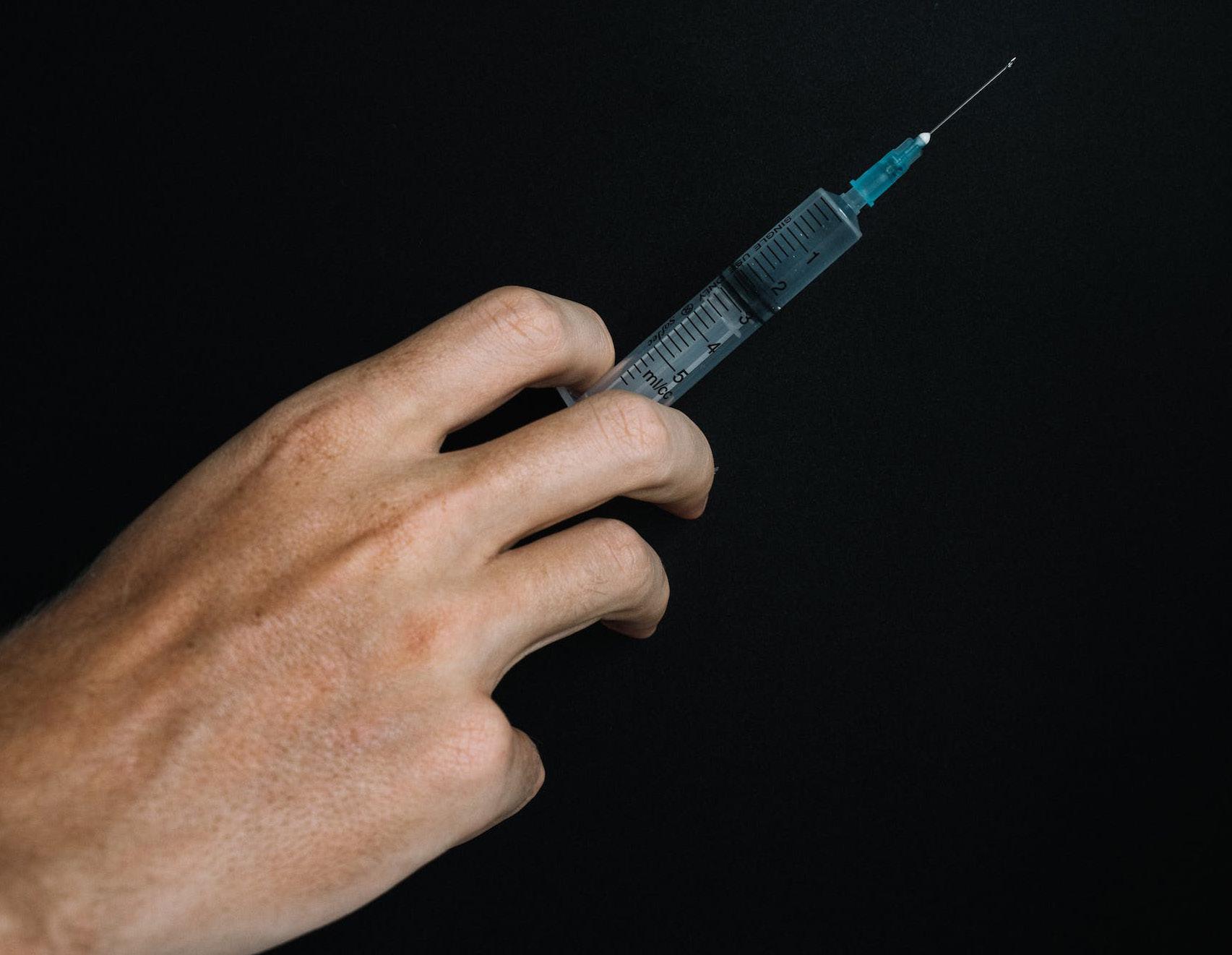 BY XANDER DALE
BY XANDER DALE
Signs reading “Every Overdose is a Policy Failure” are displayed vehemently in the sweltering heat on September 16th, 2022, just a week after California Governor Gavin Newsom vetoed SB57. It is national overdose awareness day, and community members who support harm reduction from across the greater Los Angeles area have come together to mourn the loss of the more than 10,000 that died due to drug overdoses in the past year. More importantly, they have gathered to demand government action for the veto of a bill that could have saved countless lives.
SB57 is a landmark bill which would have introduced safe injection facilities (SIFs) for people who use drugs in Oakland, Los Angeles, and San Francisco. This bill followed a separate bill, SB519, which decriminalized the possession of small amounts of opiates. In turn, SB519 freed up carceral spaces kept by low-level drug offenses, and
helped people who use drugs (PWUD) access the diversion programs they needed. In San Francisco, City Attorney David Chiu even argues that implementing proper overdose prevention programs is a “key step in our efforts to help people struggling with addiction” and that “our efforts must continue.”
SIFs can be defined as a place that “[provides] the tools people need to reduce the harms of drug use, [such as the] distribution of syringes and paraphernalia and naloxone to prevent fatal overdose. We engage in relationship building with PWUD and provide referrals to other services—we acknowledge that people use drugs and that they are deserving of dignity, love and respect and we accept that they use drugs unconditionally,” says Karen Bigg, a staff member at the Chicago Recovery Alliance, an organization which supports PWUD through harm reduction practices, like syringe distribution, fentanyl testing strips, and creating trusting relationships.
SB57 supports, and would have allowed active drug users to access SIFs with the goal of minimizing overdoses.
Similar bills have been successfully launched in New York City, where SIFs have led to many positive changes. PWUD are off the streets, where overdose and Hepatitis risks are much higher, and in facilities where they can be supervised and advised to seek alternative forms of treatment, such as mental health diversion, methadone or clean needle distribution. “SIFs are another way to build relationships with drug users and doing that can lead to positive changes for people who use drugs, but also communities that are impacted by the War on Drugs most severely,” says Bigg. The War on Drugs is a federal campaign pushing drug prohibition through drug policies that encourage the maltreatment of those who use drugs. Since the War on Drugs has begun, drug use and mortality rate have only risen.
The reason these facilities are so successful is largely due to their destigmatizing effects. Societally, PWUD are often viewed as the products of their own poor decisions, and this is a stigma that follows them. Rather, substance use should be seen as a mental health issue and should be treated similarly to any other.
“People don’t understand harm reduction and instead of taking the time to understand it, they respond how they were trained to respond by the propaganda of the War on Drugs: drug use is bad; [it is] not a normal aspect of being a living being. And by extension, drug users are bad,” says Bigg. Accordingly, she says it is not uncommon for people to think “an SIF will therefore bring bad things and bad people to a community. Of course, what people don’t realize is that drug users are already in one’s community, as they are merely invisible. People react hysterically instead of learning
“HARM REDUCTION EFFORTS DO NOT INCREASE DRUG USE, BUT RATHER FACILITATE POSITIVE CHANGES, INCLUDING ABSTINENCE.”
the facts: harm reduction efforts do not increase drug use, but rather actually facilitate positive changes, including abstinence, because harm reduction is founded on building relationships with PWUD.”
Moreover, safe injection facilities allow for smoother societal reintegration, and re-associates drug use aid with a rehabilitative rather than a punitive act. In New York City, overdose rates have curbed significantly, and stigma surrounding drug use has slowly receded. “Before I escaped my own addiction to pills, I suffered an opioid overdose that was reversed by paramedics, just as my son did twice. This bill could have prevented these overdoses,” said an attendee.
“SAFE INJECTION FACILITIES ALLOW FOR SMOOTHER SOCIETAL REINTEGRATION, AND RE-ASSOCIATES DRUG USE AID WITH A REHABILATIVE RATHER THAN PUNITIVE ACT.”
All of this said, though, the decision to veto SB57 does not actually stop such programs from running. Now, these programs are simply unregulated and mostly volunteer-run, rather than being publicly funded and state-run. The key to the existence of these programs is “to include people who use drugs in the planning and implementation of SIFs— particularly employing them to work at SIFs,” Bigg says. Further, “now that drugs are decriminalized, nonprofits can more publicly advertise their services to people who use drugs,” Jeanneatte Zipan, California state director for the Drug Policy Alliance, says.
Historically, these facilities have had to remain undercover due to the risk of illegality. The distribution of clean needles, fentanyl testing strips, naloxene, and other safe-use products was restricted, but because of their decriminalization, nonprofits can now send out vans advertising these products for better reception. Many hope that these efforts will help sway a rewrite of SB57.
The public can support non-profit programs that provide resources to PWUD, as well as legislators who will begin drafting a second bill, financially, through spreading media attention or volunteering with local nonprofits. In Berkeley, for instance, the Berkeley Free Clinic operates a volunteer-run needle exchange and naloxone distribution, for which community members can volunteer. While the veto of SB57 at large is a loss for harm-reduction in California, it should be fuel for stronger funding for future legislative efforts.

Xander Dale is an undergraduate student at the University of California, Berkeley most interested in the intersection of Law, Public Health, and Public Policy concerning a shift toward restorative justice and the decriminalization of poverty.
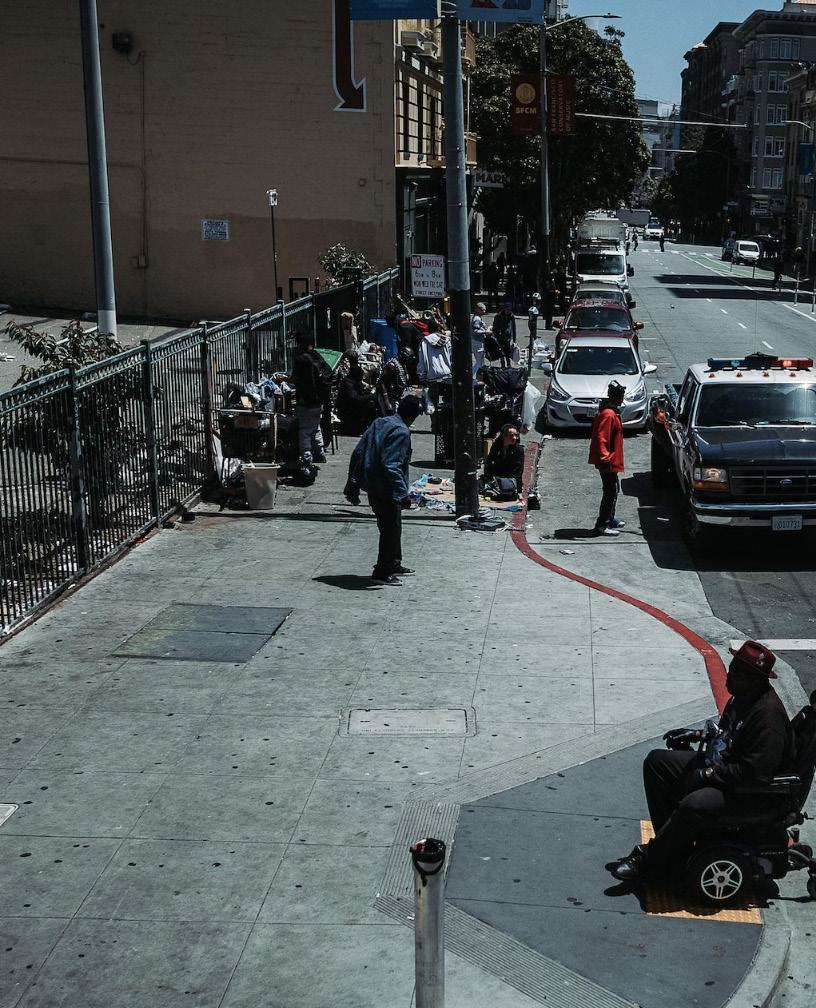
The historic People’s Park was built by the Berkeley community after the abandonment of a UC Berkeley project to use the area for additional housing during the late 1960s. For decades since, the site has been at the center of heated debate. In 2019, the University of California once again decided to purchase the land, employing police officers to forcefully remove the people living there. Lawsuits are ongoing and controversy fills the air as students walk themselves to school. UC students will inevitably interact more frequently with homeless people who have been displaced and pushed out due to the construction at People’s Park. So why is there such a persistence of homelessness in the SF Bay Area? What policies could be implemented to improve the quality of life among unhoused populations? What is the impact of media on the homeless community?
Historically, homelessness in the Bay Area wasn’t necessarily due to a lack of available housing. During the 16th and 17th centuries, concepts of the nuclear home were largely underdeveloped, and it was common for large empty spaces to be used for housing. These common spaces had historically been populated by immigrants, and indigenous groups whose conception of private property was nonexistent.
Beginning in the late 50s, there was a governmental shift to acquire these public lands through eminent domain for redevelopment. This redevelopment involved selling the land to developers for profit. Dr. Niccolò Caldararo from San Francisco State University describes the situation, stating, “[San Francisco] passed a law in ‘47 for redevelopment using eminent domain... They made it legal by saying ‘we are taking the property from this private person, but we are giving it to a private-public corporation, so it’s public,’ and then they would sell it to another private person, sort of like money laundering, which is basically what it was.”
“Redevelopment was a means of providing tremendous amounts of money to city budgets in the 50s, 60s, and into the 70s, with the promise that they were going to revitalize these areas… Shelley as mayor and many other big city mayors were at that time [the 60’s] being offered huge amounts of money from the federal government through redevelopment and so they would designate whole
parts of the city as blighted and began evicting people,” says Dr. Caldararo. As evictions increased, so did homelessness, especially for those marginalized communities of color whose neighborhoods were determined as needing ‘revitalization.’ The neoliberalist policies of the 80s, associated with the Reagan and Clinton administrations, worsened the issue. These policies radically cut welfare and the social programs that provided affordable housing, education and healthcare. As affording things like rent became more difficult, at-risk populations (consisting primarily of BIPOC people) were more likely to become unhoused. Dr. Caldararo explains that “there’s no political will to have a housing policy for poor people or for working people… you want the poor to be poor because then they will work for less...”
Dr. Dorothy Kidd at San Francisco State University similarly explains that “unless it’s going to make profit for developers, under these conditions of financial capitalism—which means a high return on the dollar and now we have a high interest rate— [affordable housing] is not going to happen and that’s still the structural problem.”
“IN CALIFORNIA, HOMELESSNESS IS GETTING WORSE... IN SOME COUNTIES, HOMELESSNESS HAS INCREASED BY 69% IN THE LAST 3 YEARS.”
According to a 2019 study, “from 1999 to 2014, the Bay Area permitted the construction of 61,000 fewer very-low-income affordable-housing units than recommended by the state…because of units being permanently withdrawn from the protection of rent control.” With a large demand for affordable housing, and the reality of a low supply of housing available, it is no surprise that, “two-thirds of low-income households were in rentals they struggled to afford.” With the majority of low-income households struggling to afford rent, precarious situations such as medical debt, rent debts, and court-imposed fines (which disproportionately affect Black and Latino communities), all contribute to rising homelessness.
And in California, homelessness is getting worse, with the SF Chronicle reporting that in some counties, homelessness has increased by over 69% in the last 3 years.
Current SF Bay Area policies for reducing the housing crisis rely on engaging private and philanthropic capital. Following the pandemic, SF county specifically enacted a plan to purchase more housing units, expand access to shelters, and place homeless individuals in permanent housing programs. So far, San Francisco has exceeded their goals, but many are still skeptical.
Low maintenance of these facilities make them unsuitable for elderly individuals and do not accommodate entire families. Dr. Kidd explains, “shelters only accommodate certain kinds of people… there are a lot of families who are unhoused and shelters are not for them… there are a lot of people who, for whatever reason, don’t want to stay in a shelter, or they’ll stay when it’s an emergency, but it’s not a long-term solution.” Rules created by shelters are also at times unmanageable, often forcing inhabitants to be back by a particular hour. The consequence of missing curfew is simply being locked out, resulting in people having to sleep on the street anyways. This is the case for UC Berkeley’s temporary housing solution for the residents of the historic People’s Park, with a curfew at 11pm.
So how can you get involved? Dr. Kidd’s paper on the influence of media on poor communities suggests that local counter-public spheres of media allow for the articulation of rights and the growth of infrastructure, which helps legitimize unhoused people’s claims in court cases. But older forms of this counter-public media, like the Street Spirit (a Berkeley newspaper run by unhoused people, for unhoused people), are going out of fashion. Kidd explains that “it’s not aging out, but it’s aging, and so they haven’t been able to… get out there and get new people involved.” And while online media allows virtually anyone to share their opinions, it is quite diffused. “Poor people can produce reports, but it’s really, really hard for those reports to gain any traction, and then for them to have traction with policymakers,” says Kidd.
Local activist-artist Roosevelt (Rosey) Stevens, who taught art classes at People’s Park for over 27 years,says “the community’s not like it was back then, there’re a few students trying to make a difference,
but not enough. We need more. We need it the way it was back then, but it’s not like back then anymore.” The rise in drug use and violent crime in People’s Park is noticeable, but the public seems to attribute this with individual flaws, rather than structural issues exacerbated by the COVID-19 pandemic. “It’s talked about a lot, but some people pretend they don’t hear it, they don’t want to deal with it,” says Stevens.
“THE CONSEQUENCE OF MISSING CURFEW IS SIMPLY BEING LOCKED OUT, RESULTING IN PEOPLE HAVING TO SLEEP ON THE STREET ANYWAYS.”
To those looking to get involved, go to the People’s Park Website. At the very least, educate yourself, pick up your local Street Spirit, ask your friends to form opinions about homelessness, talk to local politicians, and use your voice.

Anais Roatta is an undergraduate student majoring in Public Health and double minoring in Human Rights and Public Policy at the University of California, Berkeley. She is interested in understanding how current policy in healthcare influences disparities in modern society.
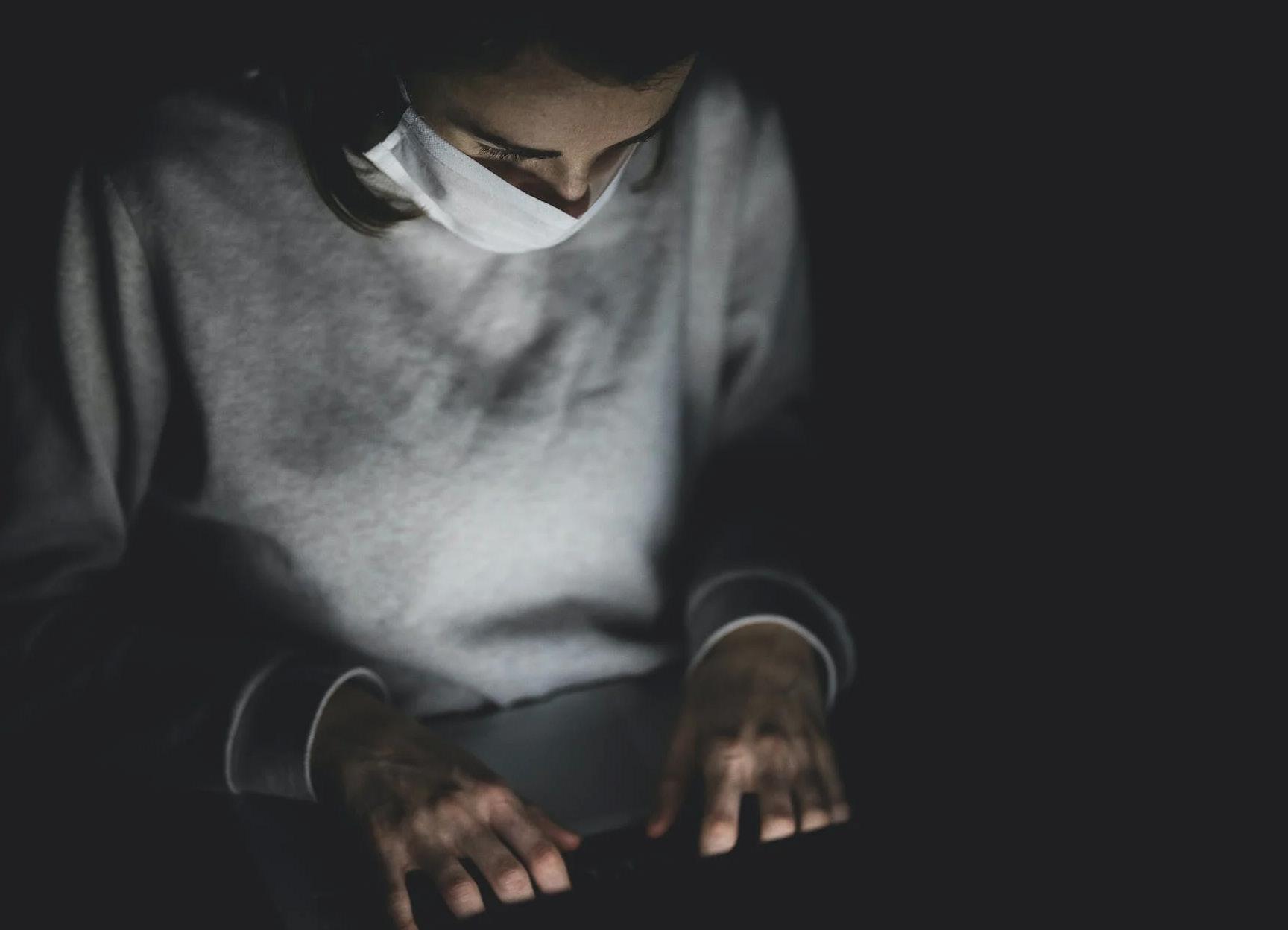
Trigger Warning: Pedophilia, Sexual Attraction, Sexual Crime against prepubescent children, Child pornography, Mental Disorder
ANSAN, Korea – It was the year 2008 when Doosoon Cho was convicted of the crime of abducting and raping a 7-year-old victim. Despite the atrocity of his crime, Doo-soon was sentenced to only 12 years. The day the story hit the headlines, the entire country trembled with fury and fear. Your next-door neighbor, an acquaintance, or even your own family member could be a potential Doo-soon. As parents realized that their children could be the next victim, they supported the victim’s family and flocked to court to protest against the short incarceration term.
When Doo-soon was released after serving 12 years in prison, citizens unanimously argued that, had it been the US, the perpetrator would have gotten the justice they deserved. This brings us to a question: what makes the two countries different? Why does the US take social injustices involving children more seriously?
The answer seems to lie in the mass coverage of pedophilia in US media, which significantly contributes to raising awareness of the issue and bringing on more involvement. The obsession with pedophilia—defined in the medical industry as a psychotic disorder of sexual attraction towards prepubescent children—is clearly shown in popular US media. There is mass
coverage of pedophiles on almost every platform, ranging from popular media such as To Catch a Predator to popular narratives propelled by conspiracy groups like QAnon.
At a quick glance, wide coverage of such issues seems crucial to raising awareness and implementing short-term prevention and response to age-specific crimes. This is extremely important because of the age group of the victims. Thousands of research have proven that the brain is malleable, especially during early development. Hence, trauma caused between birth and age eight has long-lasting and sometimes irreversible effects on the brain’s structure—the foundation for all learning, behavior, and health.
However, experts like James Cantor and Michael Seto say that, just as with any other issue, massive misinformation regarding pedophilia could have a detrimental effect. Given the extensive coverage they are exposed to, it is becoming increasingly challenging for audiences to filter out misinformation. This misinformation not only drives people away from the truth but also has a long-term adverse impact on the general public, steering individuals with pedophilic tendencies away from treatment, thus affecting both themselves and those around them. It is therefore vital to debunk some common misconceptions and arrive at a more accurate understanding of this psychotic disorder.
Contrary to conventional understanding, pedophilia—or the sexual attraction towards children—is not something that an individual can choose. James Cantor, a neuroscientist specializing in atypical sexualities, argues that recent evidence suggests that this psychotic disorder is neurological and develops in the womb. “Many people (including professionals) believed [pedophilia] to
be the result of childhood events rather than the result of biology,” Cantor states. “Specifically, it was widely believed that being the victim of sexual abuse in childhood led to one becoming a pedophile in adulthood.”
Renowned Canadian forensic psychologist and sex researcher Michael Seto argues similarly. In his research paper Are There Early Risk Markers for Pedophilia? Seto reveals that pedophilia is not something that people can choose to have. Besides the fact that pedophilia occurs higher in males than females, a comparison of brain scans of pedophilic and nonpedophilic men shows differences in regions of the brain that may be involved in processing potential sexual partner cues, including youthfulness.
Part of the reason pedophilia is feared amongst the general public is that it is impossible to profile pedophiles. Despite contrary belief, pedophilia is not uncommon. Although the prevalence of true pedophilic preference is 1%, the tendency can go as high as 5% among men in the general population when considering general fantasies. According to an anonymous survey, 20% of 197 healthy male college students admitted to having a sexual attraction to children, and 9% of them said they would have sex with a child, guaranteed they would never get caught.
Along with Cantor, many experts also debunk the
“DESPITE CONTRARY BELIEFS, PEDOPHILIA IS NOT UNCOMMON: THE TENDENCY CAN GO AS HIGH AS 5% AMONG MEN...”
commonly believed equation that sexual offenders against prepubescent children are people with pedophilic disorder. In fact, 50% of all individuals who sexually abuse prepubescent children are nonpedophilic. That is, only half of these crimes are committed by people with pedophilic disorder. Even so, there is a significant and inherent difference in the brain between pedophilic individuals who act on their impulses and those who do not. Research led by Forensic Psychiatry professors Schiffer and Amelung from the University of Duisburg-Essen reveals that the left posterior cingulate and the left frontal cortexes—the two areas of the brain which are in charge of inhibiting urges—are not as well activated for the former as for the latter.
Attraction is not a choice, but offending is. Pedophilic offenses are devastating, especially since the victims belong to one of the most vulnerable age groups. Although there is no treatment that completely rids the affected individual of the disorder, diagnostic treatment is crucial for individuals with pedophilic tendencies to control their impulses. However, biases in the health sector arising from stigmatization hinder the development of medical techniques, complicating diagnosis and treatment.
Individuals who suspect pedophilic tendencies undergo clinical evaluation based on the Diagnostic and Statistical Manual of Mental Disorders, 5th edition (DSM-5). However, the
“OFTEN, SELF-DENIAL COULD MAKE SEEKING TREATMENT DIFFICULT, WHICH IS DETRIMENTAL IN THE LONG RUN.”
definition of pedophilia, as defined by DSM-5 and the diagnosis method, has spurred controversy. Psychiatrist Fred Berlin argues that, “The current criteria place the same persons who have never molested a child into the same diagnostic category as those who have done so, which causes confusion.” Organizations such as B4U-ACT argue that certain assessment methods suggested by medical professionals are often dehumanizing, which can cause reluctance and even aversion towards therapy. An example of this is phallometry, a forensic method that examines one’s sexual attraction by measuring blood flow to one’s genitalia. Although it is legal from a strictly judicial perspective, these treatments are deemed unethical for individuals who have not yet committed a crime and simply want to address their conditions.
Current treatment options include Cognitive Behavior Therapy (CBT), pharmacotherapy, or a combination of the two. CBT uses approaches that “help repress these sexual tendencies by conditioning the cognitive thoughts, while pharmacotherapy depends on drug usage to directly suppress sexual appetite.”
While wide coverage of the topic in the media raises both awareness and inaccurate negative stigma, it also brings justice to the victim in cases of sexual offenses, quick responses, and short-term prevention methods. However, the negative stigma that it creates could hinder the affected from visiting medical care. “Society’s narrow profiling of pedophiles makes this choice difficult,” Seto argues. Often, self-denial could make seeking treatment difficult, which is detrimental in the long run to both pedophilic and nonpedophilic parties as the pedophilic party becomes reluctant to find the appropriate resources that could prevent them from committing such offenses. Those directly affected by the psychotic disorder and the media should take specific steps for the better: people with the psychotic disorder should actively seek treatment, and the public and the media should work towards avoiding misguided understanding of the psychotic disorder.
ABOUT THE AUTHOR
Chaerin Lim is an undergraduate student interested in Public Health at the University of California, Berkeley.
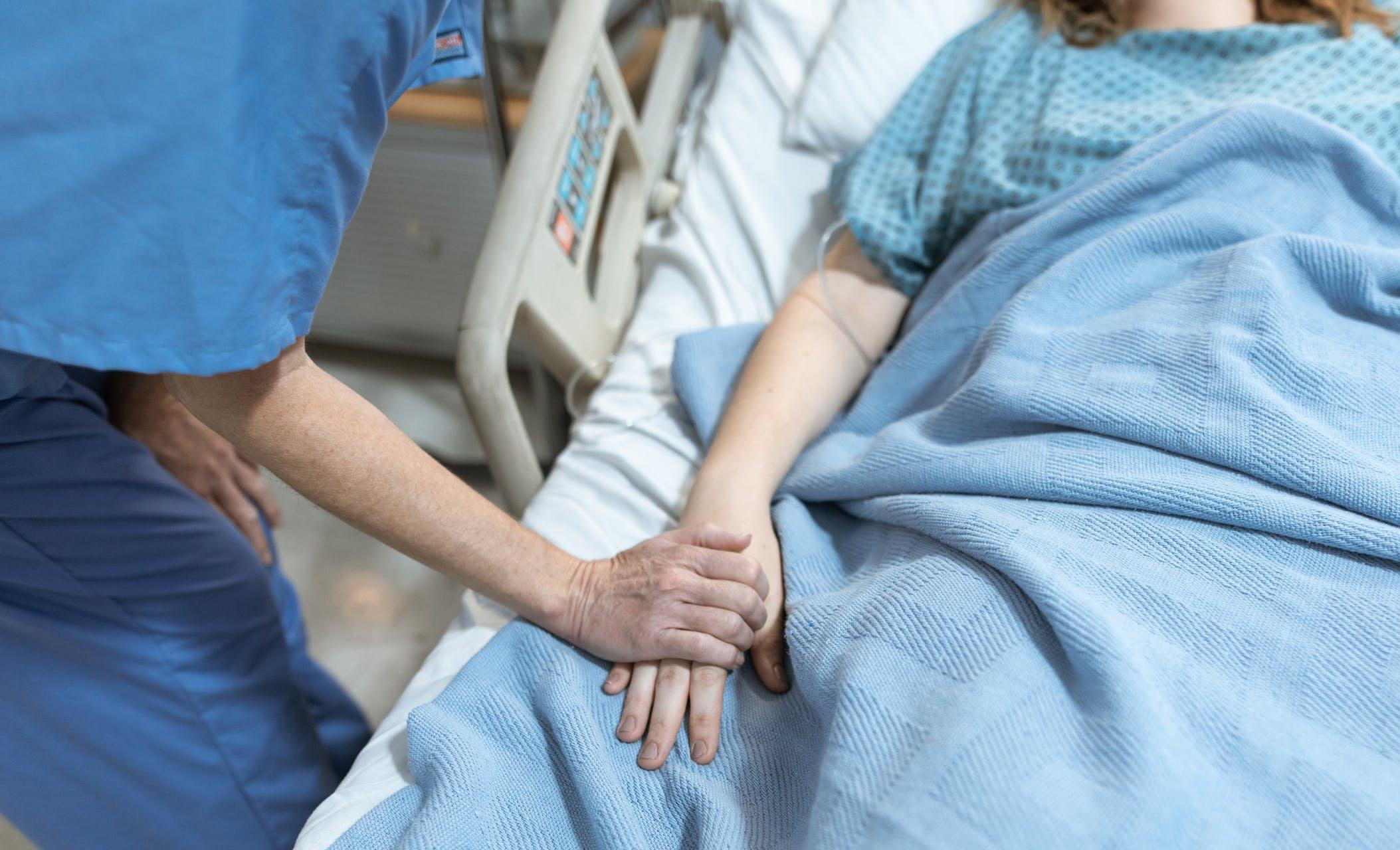
Picture this: An entire hospital in the palm of your hand. The rapid advancements in recent health technologies have made the goals of global telemedicine–decreasing cost and increasing access to care–more attainable by providing a faster and cheaper platform. Richard J. Boxer explains, “Anything that reduces the need for bricks and mortar facilities reduces costs and improves patient’s well-being.” Telemedicine is part of the most recent revolutions in healthcare, intending to bring healthcare to the patient, providing patient-centered care, lowering healthcare costs, saving lives, and improving patients’ health from a distance. Technology demolishes the previous educational barriers (access to medical school, procedural training, etc.) that restricted advanced healthcare in developing countries. Previously unmet care, like diagnostics, can now be automated to cut costs and support current health workers at work due to developing AI.
Data analytics can be used to gather health data to diagnose patients precisely, contributing to a more evidence-based healthcare system.
“UNMET CARE CAN NOW BE AUTOMATED TO CUT COSTS AND SUPPORT CURRENT HEALTH WORKERS DUE TO DEVELOPING AI.”
Darlington Ahiale Akogo—founder, CEO, and director of AI at GUDRA and its subsidiaries (minoHealth, minoHealth AI Labs, karaAgro AI, Runmila AI Institute, and Gudra AI Studio) describes the effectiveness and success of AI in Africa. According to the article, there is one doctor for every 60,000 patients in
Malawi. Additionally, in Ghana, there is one radiologist for every 800,000 people. This lack of access to care is the main contributor to high mortality rates due to communicable diseases. Organizations such as minoHealth AI Labs have also been using deep learning and convolutional neural networks to “...develop automated diagnostics and prognostics systems that can detect conditions including breast cancer, pneumonia, hernia and fibrosis from just X-ray images.”
Furthermore, Asia is emerging as a healthcare innovation center to address a critical resource gap. Healthcare professionals think AI will enhance Asia’s healthcare practitioners’ skillsets and their ability to complement their work with technology. These technologies “include robotassisted surgeries, highly accurate diagnoses of detailed medical images, and new drug development.” However, since most of the continent’s healthcare system is overstretched and can only provide essential services, some spectators advocate directing AI resources toward strengthening primary healthcare to drive more positive changes.
“AI HAS INCREASED CAPACITY AND DECREASED THE COST OF CARE IN THE WORLD.”
AI has increased capacity and decreased the cost of care in the world. The COVID-19 pandemic has reshaped the healthcare system, and companies are turning to technology to supplement the increased need for care—gaining traction for AI integration during the pandemic. For example, AI integration in radiology will reduce the overall cost and time patients spend at imaging centers. It will also lower their exposure to radiation and heavy metals during the process. These developments can be seen in an AI company called Ezra that “wants to replace expensive and invasive prostate biopsy procedures for cancer detection in men with cheaper MRI options.” Previously, “the average cost for a prostate biopsy [was] more than $2,000, according to research published in the Journal of Urology. Ezra is offering prostate MRIs directly to consumers for $575.” Furthermore, AI technologies increase diagnostic accuracy and speed. And this is only the beginning.
Many are wary of the changes AI could potentially bring to a sector primarily based on human decisions. The main challenges centered around AI include the following: data protection (legal bias, data subject rights, and data transfers), patient trust, bias/accuracy of data, contractual and regulatory issues, and intellectual property ownership. One potential reason for this hesitation is that ethical issues of implementing AI are at present “extendedly discussed in the literature; however, no
universally accepted comprehensive framework for ethical AI development and implementation in healthcare” has actually been developed. Therefore, it is common for individuals to question the foundational plan of AI integration. Can we build AI without losing control over it? Are the risks of technological development truly greater than the rewards? To give some peace of mind to those individuals, the World Health Organization “... adopted resolution WHA60.29 in May 2007. The resolution covers issues arising from the inappropriate deployment and use of health technologies and the need to establish priorities in the selection, regulation, assessment, and management of health technologies, specifically medical devices.” Furthermore, “by adopting this resolution, delegations from Member States acknowledged the importance of health technologies for achieving health-related development goals; urged expansion of expertise in the field of health technologies, in particular, medical devices; and requested that the World Health Organization (WHO) take specific actions to support Member States.”
In some ways, AI will likely never replace human care (i.e., emotion) because “empathic AI is thus either impossible or unethical. Impossible because of the lack of genuine empathy on the part of the AI. Unethical because of the risks empathy produces not only for deception in specific instances but for reducing and undermining the meaning and expectations for real empathy.”
The nature of empathy that connects one individual to another is not “exclusively a matter of rule-following or good consequences represented under some algorithmic structure.” However, with decreasing costs and increasing access to advanced care worldwide, the integration of AI will have limitless impacts on what it means to diagnose and treat patients. People will not readily accept what they cannot comprehend, especially in healthcare. Once we understand that we will only have one chance to engineer these technologies in a way that’s integrable into our healthcare delivery system, the implications of AI will be limitless.
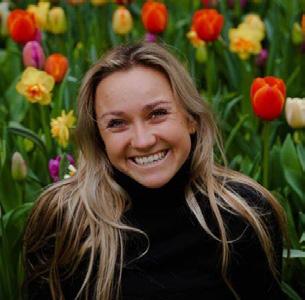
Paige McGarry is a fourth year undergraduate student at the University of California, Berkeley majoring in Public Health and minoring in Political Economy with a concentration in Globalization. She is passionate about battling healthcare disparities and being an advocate for health equality and liaison for individuals who do not have the resources to share their own stories.

Froma 13-year-old Chinese-Canadian girl turning into a red panda, a Colombian girl trying to save her family’s magic powers, to a Chinese-American woman navigating the multiverse—each of these diverse stories may seem wildly different.
But if you watched these films (Turning Red, Encanto, and Everything Everywhere All at Once), you may have noticed that they encompass a theme that has emerged in many pieces of recent media: intergenerational trauma and how it seems to go handin-hand with the immigrant experience.
According to the American Psychological Association, intergenerational trauma can be defined as “a phenomenon in which the descendants of a person who has experienced a terrifying event show adverse emotional and behavioral reactions to the event that are similar to those of the person himself or herself.” In other words, just as physical traits such as hair color and eye shape are inherited genetically, recent studies have
shown that trauma can be inherited as well through Adverse Childhood Experiences, or ACEs. Research has also shown that ACEs disproportionately affect historically marginalized communities more than others. The body’s genetic information is passed down to offspring through the replication of long sequences of DNA molecules, with sections called genes encoding for heritable traits. These traits manifest as the physical characteristics and behaviors that make up a person. Certain cellular mechanisms in the body also change which genes are expressed—or turned “on” through a process called acetylation and turned “off” through the process of methylation—as an adaptive response to changes in the environment.
Epigenetics—the study of how cell activity changes gene expression—explores the biological mechanisms behind how ACEs can be passed down. In particular, levels of the stress hormone cortisol can influence how the body reacts to long-term or chronic levels of stress caused by the environment by triggering changes in how certain genes are expressed.
Dr. Andrew Kim, a researcher and assistant professor of biological anthropology at UC Berkeley, describes the effect of the stress hormone cortisol: “We see that greater or chronic levels of stress may trigger the body to adapt to these conditions, thus leading to differential methylation or acetylation in certain areas of the genome. That alteration of certain genetic loci leads to different outputs in the body, and these changes in physiology are translated into behavior.”
Recent studies have shown that differential gene expression, as a result of stress, is associated with immunological responses linked to mental health conditions such as depression and anxiety. Additionally, chronic stress may lead to an increased risk for substance-use problems and sleep issues, according to the Centre for Addiction and Mental Health.
For those healing from intergenerational trauma, the idea that their mental health conditions are affecting them on a molecular level may be terrifying, and it may seem that healing is hopeless. However, Dr. Kim emphasizes not giving into the idea that “your biology defines your destiny.” He points out that, statistically and
“GENE EXPRESSION, AS A RESULT OF STRESS, IS ASSOCIATED WITH IMMUNOLOGICAL RESPONSES LINKED TO DEPRESSION AND ANXIETY.”
scientifically, the biological effects of intergenerational trauma are not larger than another aspect of epigenetics and human biology as a whole: reversibility.
Dr. Kim states, “While there is a larger scientific narrative saying that trauma may affect people and their future generations—which is true to a certain degree— we also know that there are signs that these effects could be short-lived and are flexible processes that are reversible, so it’s important to balance that narrative.”
Though the topic of intergenerational trauma may seem like a recent trend, the phenomenon has existed for generations before the creation of the term. “For some people, it just exists—and they just exist in it,” Dr. Kim says, “and it doesn’t have to be seen in a negative/positive binary. People’s lives are complex, and intergenerational trauma may just be one dynamic.”
“THESE STRESSORS COULD BE POTENTIALLY TRAUMATIZING-YET THEIR EFFECTS MAY NOT BE TALKED ABOUT OPENLY DUE TO CULTURAL VIEWS OF MENTAL HEALTH.”
Like in the stories told in Turning Red, Encanto, and Everything Everywhere All at Once, people from immigrant families may find this perspective to be especially true; these families might have moved from their home countries as a result of political, economic, or social factors such as war or famine. These stressors, in addition to the stress of living in a new country, could be potentially traumatizing—yet their effects may not be talked about openly due to cultural views of mental health and are just accepted as part of life.
But for those whose mental or physical health is being affected by intergenerational trauma, these recent movies, in their heartwarming portrayal of family dynamics, demonstrate one of the possible first steps towards healing: facilitating open communication between generations.
Ultimately, intergenerational trauma and the biological systems behind it are as complex as the lives of the people that it affects. Intergenerational trauma is a story as old as human nature itself—but so is adapting to it. And within that, comes healing.

Jennifer Sun is a third-year undergraduate student at the University of California, Berkeley majoring in Data Science with an emphasis in Human and Population Health. She is passionate about understanding biological systems through data.
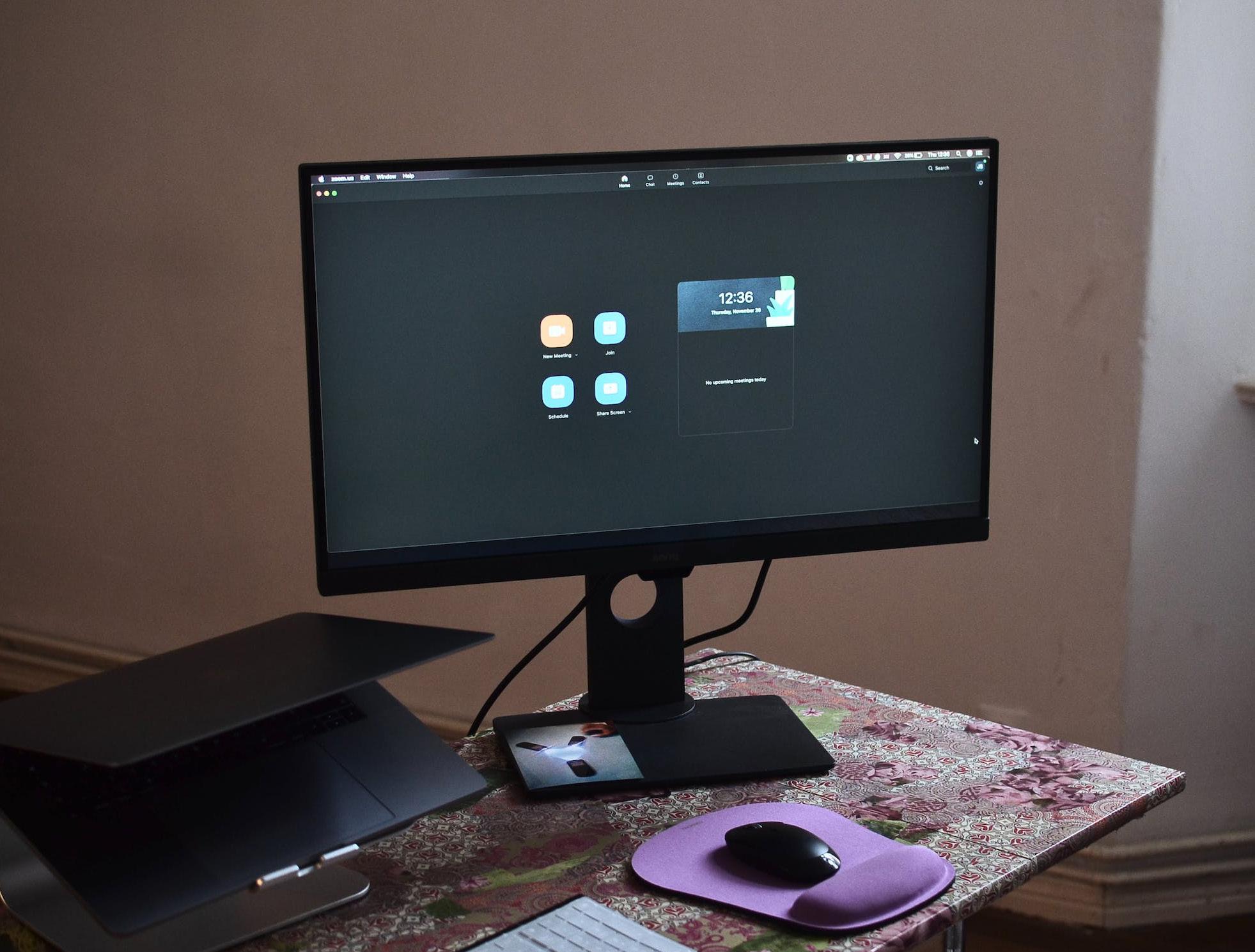
While many homeless shelters have provided temporary housing for individuals suffering from homelessness, there is a lack of a critical resource that enables individuals to escape homelessness: wifi. Without internet access, individuals can’t discover opportunities and benefits that allow the homeless population to build a sustainable life. A 2019 survey conducted by the City Bar Justice Center (“CBJC”)—a non-profit affiliate of the New York City Bar Association serving low-income and disadvantaged New Yorkers—in Manhattan and the Bronx family shelters found that the homeless would use the internet for the following purposes: “permanent housing (70%), finding a job (60%), finding medical care (63%), accessing other benefits such as unemployment, Supplemental Security Income (SSI), food stamps, Medicaid (45%), access to email (67%) and social networking (74%)”. In addition, over 60% of respondents want to utilize the internet to find opportunities for sources of income, treat their health, and have access to emails and social media for outreach purposes. Unfortunately, many sheltered individuals cannot find the supportive resources and services available, given that public information has shifted to the internet. Of the 84 surveyed current and former family shelters in Manhattan and the Bronx, 67% reported a lack of regular internet access.
Daaimah Tibrey is a current full-time software engineer who recently escaped homelessness. She now works at Momentive,
an experience management company that offers cloud-based brand insight. She credited her Samsung Galaxy Note 3 for her success because she could locate free meals and connect with social services for financial advising and free child-care services. Her family moved into a shelter in the Civic Center (San Francisco) after living in a 1991 Mitsubishi Diamante with the help of Compass Family Services. With the help of wifi access, in January 2019, she discovered Techtonica, a six-month coding boot camp for lowincome and disadvantaged women. She later applied to software engineer opportunities, stating, “Every five minutes I spent on my phone would be the difference between my kids having a backpack, shoes, or a place to live. It helped me accelerate out of homelessness.” Without wifi, Tibrey would not have been able to discover Techtonica, which changed the course of her life from living in a car to permanent housing in Vacaville. Daaimah is not the only one whose life was changed by wifi access.
Isabella Black, 29, who left Bakersfield in 2014 and is currently residing in San Francisco transitional housing, also uses her iPhone to actively apply to jobs and communicate with recruiters. With internet access from computer labs at the Larkin Street Youth and wifi from transitional housing, Black could browse job openings on the company’s website and other sources, work on her resume, and establish networks and connections with peers she had met. A six-month interview of 350 homeless adults over the age of 50 conducted by the University of California, San Francisco (UCSF) in Oakland, California, found that of the 343 responded participants, about ¼ reached out to potential employers (23.1%). However, the majority used their mobile device to contact
relatives (82.3%) and friends (77.6%), medical personnel (66.6%), social service agencies (49.5%), and shelters or other housing providers (30.7%). In addition, individuals that have access to a computer with internet check emails (24.8%), look for housing information (16.8%), medical information (15.1%), and job search (14.4%). Despite heavier usage for other means, internet availability enables individuals to connect with family and friends quickly, find opportunities, and receive live information conveniently, providing the homeless with community faster support.
In addition to job opportunities, finding special needs and accessing healthcare benefits are critical for effective physical and mental health recovery. For example, a study conducted in December 2018 by UCSF found that older homeless individuals, especially those aged 50 or older, are at higher risk of “chronic disease, functional and cognitive impairment, and substance use.” Furthermore, UCSF identified that within the surveyed 350 participants in Oakland, California, who were homeless and older than 50 years of age, out of the 300 individuals that carry a phone, about 32.1% have smartphones that could access the internet. However, 45% of smartphone users cannot access the internet. The study also found that 94.2% do not have annual contracts or cellular data, and 55% have used the internet in the past. This is problematic given that effective longitudinal healthcare heavily relies on frequent communication between the medical professional and the patient. Contact with email or patient portals allows patients to schedule appointments with their medical professionals. It is important to note that a permanent address is not required; thus, people experiencing homelessness have access to this service. For younger homeless individuals, a 2018 study under the National Library of Medicine identified common mental conditions among the community, such as “depression, conduct disorders,
“WITHOUT WIFI, HOMELESS INDIVIDUALS WILL BE MORE ISOLATED AND PUSHED FURTHER INTO DETERIORATING MENTAL AND PHYSICAL HEALTH.”
posttraumatic stress disorder, and suicide attempts and ideation. In addition, they are often the victims of physical and sexual abuse, engage in risky sexual behaviors, and are frequently diagnosed with sexually transmitted diseases, including HIV.” Without convenient access to support resources due to no wifi, homeless individuals will be more isolated and pushed further into deteriorating mental and physical health, making it even more challenging to heal and escape homelessness.
I communicated with Garret, a community representative at ShelterTech—a non-profit organization in San Francisco supporting individuals experiencing homelessness and connecting them with internet service providers to offer free wifi in shelters and transitional housing. During our conversation, we discussed the challenge of homeless residents living in shelters without wifi. This issue became especially relevant during the COVID-19 pandemic when all public physical and mental health services temporarily
“THE COVID-19 PANDEMIC FORCED MANY PHYSICAL LOCATIONS TO CLOSE, WHICH STRUCK THE HOMELESS COMMUNITY THE HARDEST, GIVEN THEY DON’T HAVE A REMOTE OPTION TO SEEK SUPPORT.”
closed their physical offices. Ever since the pandemic, most healthcare services have switched to online formats such as videocall sessions. Furthermore, connecting with a translator without a mobile device or computer was problematic as some residents were not fluent in English. The homeless community was also unable to receive proper medical prescriptions, counseling, and therapy without the guidance of a medical professional. Constant isolation from COVID-19 protocols has also led to more severe depression among the homeless. Some individuals became suicidal, while others were in critical condition due to untreated diseases or other illnesses.
With the never-ending development of cost-effective technology and the rapid advancement of many devices and the internet, Californian legislators, service providers, counties, and nonprofits should collaborate to develop free wifi that is easily accessible to the homeless community and shelters. Homeless individuals lack the proper support and treatment to escape homelessness because many services and crucial information are found online. The COVID-19 pandemic has forced many physical locations to close, which struck the homeless community the hardest, given they do not have a remote option to seek support. People experienced more severe depression because of isolation, and their mental and physical health deteriorated further. Homelessness will only increase and worsen if no immediate action is taken. Free wifi access will aid many individuals quickly and conveniently, allowing each person to receive the help they need anywhere at any time.
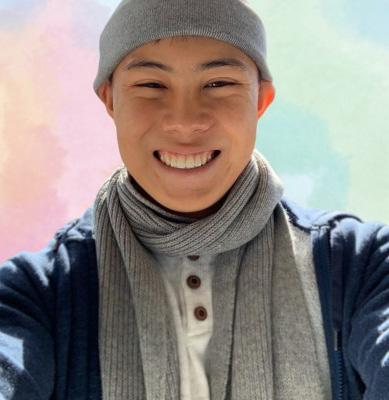
Roderick Tan is an undergraduate student at the University of California, Berkeley interested in Public Health.

Mare Island in Vallejo, California is an old naval base that played a significant role in building battleships during World War II. It was home to the USS Ward and USS San Francisco, both of which were used to fight Japan in 1941. The island had been a big workplace for Navy personnel involved in the construction of naval vessels and helped build the ships by using a key material: asbestos. Asbestos is a durable mineral that is resistant to heat and was commonly used in the construction of battleships to manage the release of fire from the ship’s guns. At the time, navy construction workers were unaware of the dangers associated with asbestos, such as the fact that asbestos was the main cause of mesothelioma. Mesothelioma is a malignant cancer that forms in the lungs and typically occurs after 10 years of continuous exposure
to asbestos. Approximately 90,000 people have died from asbestos-related diseases, the most common being mesothelioma. An estimated 125 million people worldwide still remain at risk of occupational exposure to asbestos. This raises the question of what actions companies utilizing asbestos took to compensate workers on Mare Island who were diagnosed with
“APPROXIMATELY 90,000 PEOPLE DIE FROM ASBESTOSRELATED DISEASES, THE MOST COMMON DISEASE BEING MESOTHELIOMA.”
mesothelioma due to their lack of oversight.
Machinists and engineers worked in tight spaces with poor ventilation where asbestos fibers were present, making it easy for the fibers to be inhaled into the lungs. Damaged asbestos can release deadly fibers into the air, a fact that workers at the time were unaware. It wasn’t until scientists in the mid-1950s discovered the link between asbestos and mesothelioma. It is uncertain how many shipyard
“UNLIKE MOST OTHER COUNTRIES AROUND THE WORLD THAT HAVE BANNED ASBESTOS, THE US NEVER FULLY BANNED ASBESTOS.”
workers suffered from mesothelioma, although many veterans have spoken out about their conditions with mesothelioma. Many have even filed lawsuits against companies that exposed their workers to asbestos and failed to enforce (or implement, whichever you think is more accurate) safety regulations. Companies, such as Aurora Pump Company, were under fire for putting people at risk. The company was later acquired by Pentair Pump Group in 1997. Workers who were exposed to asbestos demanded the company to file for bankruptcy and compensation; the company has not done either. Asbestos is not as widely used today by major corporations, and many companies have come up with alternatives such as polyurethane foams, mineral wool, cellulose, etc. Buildings that exist today that were built before the 1980s are the only existing remnants of asbestos today. While asbestos can still be used as it is not fully banned in the US, companies have independently chosen to abandon its use. National Gypsum, a drywall company, made the executive decision to put an end to utilizing asbestos in their products as it was deemed unsafe.
Unlike most other countries around the world, the US never fully banned the use of asbestos, putting their laborers at risk. Companies based in Mare Island did nothing to protect their workers from asbestos and avoided lawsuits that would compensate those who suffered from mesothelioma. Although asbestos is not
used or produced as much now compared to every decade in the 20th century, the lingering repercussions of those who were exposed to asbestos worry about the potential development of mesothelioma. Some individuals may already be living with the disease and have to face the reality of a 10% chance of survival associated with it.
By banning asbestos permanently, the US can save lives, especially for industry workers who are surrounded by damaged asbestos. Even though many companies have chosen to not consider asbestos for their products, it still remains in some buildings. Switching to safer alternatives and removing all traces of asbestos from public buildings can reduce the numbers of mesothelioma cases. As for those who suffered from mesothelioma during their duties on Mare Island, it is only lawful that companies acknowledge and compensate these workers. The asbestos that still remains inside the abandoned buildings of what used to be a naval base on Mare Island should be cleaned up, discarded safely, and become the next step towards permanently saying goodbye to the use of asbestos in the US.
ABOUT THE AUTHOR
Erik Davis is an undergraduate student at the University of California, Berkeley interested in Public Health.

Ithad been a couple months since I started volunteering as a hand hygiene observer at Alameda Hospital. My job was merely to observe that hospital staff followed appropriate hygiene protocol, yet I was often taken by surprise by the responses I would get while I did my job; what I believed to be a passive, nonconfrontational role was met with sarcastic remarks, suspicious glances, and general annoyance. I imagined Health Care Providers (HCPs) to be dutiful and diligent in something as simple as washing one’s hands, yet many of the hospital’s units had sub-50% compliance rates. I would hear, “Here comes the hand washing police,” or “You better watch out!” from nurses and other technicians alike.
In 1847, Ignaz Semmelweis, a Hungarian physician, studied the almost miraculous effects of simple
hand hygiene; he found that the doctor’s ward produced three times the fatality rate of the midwives’ ward, all due to good hand washing policy. Since then, hand hygiene in medical settings has become one of the most important factors in preventing hospital-borne infections. And
“I WOULD HEAR, “HERE COMES THE HAND WASHING POLICE,” OR, “YOU BETTER WATCH OUT!” FROM NURSES AND OTHER TECHNICIANS ALIKE.”
as antibiotic-resistant strains of bacteria become more prevalent, hospitals find themselves turning to simple hand hygiene protocol to prevent hospital-borne
infection. Modern medical practice generally involves handwashing before and after patient contact.
Alameda Hospital, one of the hospitals under Alameda Health System (AHS) in Oakland, follows similar guidelines. Foam sanitizer is posted next to every patient room, high priority rooms have special PPE carts, and reminder cards are clipped onto every door. Hand washing seems easy and simple enough, so why is Alameda Hospital’s compliance rate so low?
It may help to look at common factors leading to low compliance rates. Observed factors include job status (doctors and nursing assistants), inconvenient locations of sinks and sanitizers, forgetfulness, skepticism of the effectiveness of washing, etc. It turns out that HCPs are not as diligent as we may think.
So why is it so important to wash your hands? Hands touch everything, and in a hospital where a host of diseases simultaneously converge on site, the hands can become a breeding ground for all kinds of pathogens, including bacteria and viruses. The World Health Organization (WHO) predicts that, “Globally, out of every 100 patients, 7 in developed and 15 in developing countries will acquire at least one HAI (Healthcare Associated Infections) in acute care hospitals.”
This is especially important due to the existence of antibiotic-resistant strains of bacteria like MethicillinResistant Staphylococcus aureus (MRSA), where preventative measures oftentimes are the only method of treatment. The effectiveness of hand hygiene is clear: “Investing in hand hygiene yields huge returns. Implementation of hand hygiene policies can generate economic savings averaging 16 times the cost of their implementation.”
Dr. Phuong Le, the Infection Control manager at Alameda Hospital, has been overseeing hand hygiene and is coming up with ways to improve. Infection control tracks, observes, and audits the hospital to ensure that nosocomial infection is kept at an all-time low. Daily duties include tending to negative-pressure systems, humidity, and air purity. In addition to these responsibilities, Dr. Le manages a team that keeps track of hand hygiene, a team I was assigned to. The team observes hand hygiene habits among the staff of the hospital, ranging from nurses to X-ray techs to janitors. The data is presented in front of the board of directors in order to help educate and train for better hand hygiene compliance. Common hand hygiene implementations include hand sanitizer dispensers in front of every patient room, strict control of negative pressure rooms, proper and specific warnings of contagious disease, carts with a supply of PPE (masks, gowns, sanitizing wipes). Dr. Le consistently found that,
despite systems and supplies being dispersed plentifully, infection can still spread if no culture is set among the staff: “There is a culture in the hospital, the culture of hand hygiene importance. If everybody buys into that culture, then yes, when the infection happens, we can say ‘it’s not from the dirty hands but something else’ and then look for another reason.”
Alameda Hospital’s smaller size makes hand hygiene easier to implement compared to Highland Hospital, one of AHS’ bigger facilities. With continued support in Infection Control, Dr. Le sees a bright future when it comes to preventing hospital-borne diseases.
“WHO WOULD HAVE THOUGHT THAT HOSPITALS, BUILDINGS OF HEALING AND MEDICINE, WOULD BECOME SUCH A HOTSPOT OF DISEASE?”
Solving real world problems like nosocomial infection requires a multifaceted and multistep approach–it is not enough to instill a hand hygiene policy. Safety network hospitals such as AHS treat hundreds of uninsured patients a day, so hand hygiene becomes all the more important. This is especially true after the outbreak of COVID-19, as infection control became a priority for hospitals around the world. Who would have thought that hospitals, buildings of healing and medicine, would become such a hotspot of disease?
ABOUT THE AUTHOR
Chanic Kim is an undergraduate student at the University of California, Berkeley interested in Public Health.

Despite making up only 12 percent of the population, Black women represent 60 percent of all HIV infections in women in the United States. In fact, the rate of H.I.V. infection is 20 times higher among Black women compared to White women, making up 57 percent of all new cases. These higher rates have often been attributed to racial differences in risk behaviors associated with drug use or sexual occurrences; however, “African Americans report less risky drug use and sexual behaviors than their White counterparts” in general. Indeed, new research has increasingly pointed to a much larger player at hand: the mass incarceration of Black men in the United States. The United States makes up five percent of the world’s population, yet it encompasses up to 25 percent of the world’s prison population, a majority of whom are racial minorities. Ever since the declaration of the War on Drugs in 1971, a government-led initiative that aimed to combat illegal drug use by increasing penalty sentences and drug arrests, as well as militarizing law enforcement, the rate of incarceration has spiked exponentially. In her book, The New Jim Crow: Mass Incarceration in the Age of Colorblindness, Michelle Alexander stated that “more than 31 million people have been arrested for minor drug offenses since the drug war began. Nothing has contributed more to the systemic mass incarceration of people of color in the United States than the War on Drugs.”
But what does this racialized hyper-incarceration of Black men have to do with the increased H.I.V. infection rates of nonincarcerated Black women? The answer is the culmination of a number of factors, the first of which lies in the high rates of H.I.V.
infection in prison populations due to the mass-arresting of individuals involved in drug-related activities as part of the War on Drugs. This introduced a large number of individuals who were at high risk of being infected with H.I.V. into the penal system and concentrated them in one area. According to Dr. Robert Fullilove, a public health researcher and member of the Faculty of Public Health at Columbia University, these mass arrests led to a substantial increase in the rate of H.I.V. infection within the prison population. During a time when H.I.V. began circulating within communities and “there was probably a rapid rise in the number of people using drugs and sharing needles, we decided to send everybody to prison. It’s a way of saying that the group of people that had the greatest risk of exposure to H.I.V. was precisely the one that was targeted for incarceration.” He notes that by 2010, there were over 2.2 million individuals behind bars and 6 million people on parole or under the supervision of the court, all of whom represent “a substantial portion of the adult population [who are] in a setting where there is a high concentration of H.I.V. [and] where there is a great deal of circulating in and out of the community… You’re suddenly finding that more than anything else for a condition that we could not treat effectively and that was routinely fatal.” This high concentration of H.I.V. infection, which began during the 1970s, persisted with the lack of access to protection in sexual interactions, higher rates of sexual assault, overcrowding, and transmission of the virus through shared needles used for drugs and tattoos in prisons. These factors drastically increased inmates’ probability of acquiring the disease. As individuals cycled in and out of the penal system, the rate of H.I.V. transmission into communities predominantly comprised of people of color also increased. Indirectly, mass incarceration can also facilitate the disruption of relationships by reducing the number of
men in Black communities. This, in turn, leads to an increase in the number of partners each man has and subsequently raises the rate of transmission. “When matching individuals by their propensity for incarceration, individuals who had been incarcerated had 4.34 (stratified analysis) to 4.76 (nearest neighbor score matching) more partners over the lifetime compared to individuals who had never been incarcerated, and there was no difference in the number of partners in the past year.”
However, this doesn’t indicate that incarcerated Black men are the sole cause of high H.I.V. rates in their communities; the answer is much more complicated. Dr. Fullilove suggests that mass incarceration doesn’t simply disrupt relationships by imprisoning a considerable portion of an adult population, it weakens communities’ overall capacity to organize effective, coordinated efforts to combat the threat that H.I.V. poses to individuals. The stigmatization of H.I.V., stemming from its association with male-to-male sexual contact, causes infected individuals to be averse to treatment out of fear of ostracization from their communities. “People would identify themselves as having been infected with the disease, but would absolutely not go to treatment or take drugs because they didn’t want others to find out that they were living with this infection… [this] kind of behavior makes it almost impossible to have a mounted, coordinated response to the kind of threat that H.I.V. represented.” Even if one does intend to seek treatment, the expensive cost that comes with it can cause enormous financial strain. A permanent criminal record often makes it difficult for ex-offenders to find a job and ensure economic stability, making treatment an impossibility. A survey published in 1996 showed that 65 percent of all employers would not intentionally hire
“A PERMANENT CRIMINAL RECORD OFTEN MAKES IT DIFFICULT FOR EX-OFFENDERS TO FIND A JOB AND ENSURE ECONOMIC STABILITY, MAKING TREATMENT AN IMPOSSIBILITY.”
an ex-offender, and a criminal record automatically disqualifies applicants from being hired in the health, education, law, and real estate sectors, as well as denies them the right to apply for public housing assistance, education, and public benefits. By the Personal Responsibility and Work Opportunity Reconciliation Act of 1996, “‘persons convicted of a state or federal felony offense involving the use or sale of drugs are subject to a lifetime ban on receiving cash assistance and food stamps.’” These social factors can prevent infected individuals from getting treatment and facilitate a renewal of risk behaviors, further circulating the H.I.V. virus within marginalized communities.
Undeniably, the elevated rate of H.I.V. infection among Black women is tied to the overarching phenomenon of mass incarceration, and to minimize this recurring health disparity, one must shut down the intermediaries spurring it. “Ending
“THE ELEVATED RATE OF H.I.V. INFECTION AMONG BLACK WOMEN IS TIED TO THE OVERARCHING PHENOMENON OF MASS INCARCERATION.”
H.I.V. in the USA can only be done by ending H.I.V. in Black America… The concentration of H.I.V. within marginalised subgroups within Black communities is arguably the manifestation of the systems of oppression at the intersection of racism and homophobia, sexism and misogyny, transphobia, and youth vulnerabilities. Ending HIV cannot be accomplished without dismantling these systems of oppression.” This can include reducing the number of individuals who enter prison, investing in resources that help ex-offenders reintegrate into mainstream society and contribute to the national economy, and, more generally, engaging in open conversations about mass incarceration that increase awareness among the general public. By waiving incarceration as a penalty for low-level drug offenses (which are often committed by nonviolent individuals) and first-time offenders (especially those with mental health illnesses), prison spaces can be reserved for individuals who truly pose a significant threat to the public and instead elevate public safety. “Cost-effective” programs, such as the Bard Prison Initiative, seek to increase the level of education among incarcerated individuals and help them reintegrate into and become contributing members of society, as well as guide them on how to “maximize the ability of healthcare systems to invest and engage in the reform of the inequities produced by systems of incarceration and, in so doing, to increase access to resources that promote health and prevent disease.” Drug treatment programs can also ensure individuals receive the help necessary to rehabilitate, avoid recidivism, and re-enter society. This cruel system of mass incarceration can be toppled. We just need to take the first step, initiate that first of many conversations, and lend that helping hand. Sometimes, the willingness to understand and give a second chance are all that is needed to change the lives of millions for the better.

Elena Tung is a fourth-year student majoring in Public Health at UC Berkeley. She is interested in the intersection of public health, medicine, and environmental health, with an emphasis on health advocacy.
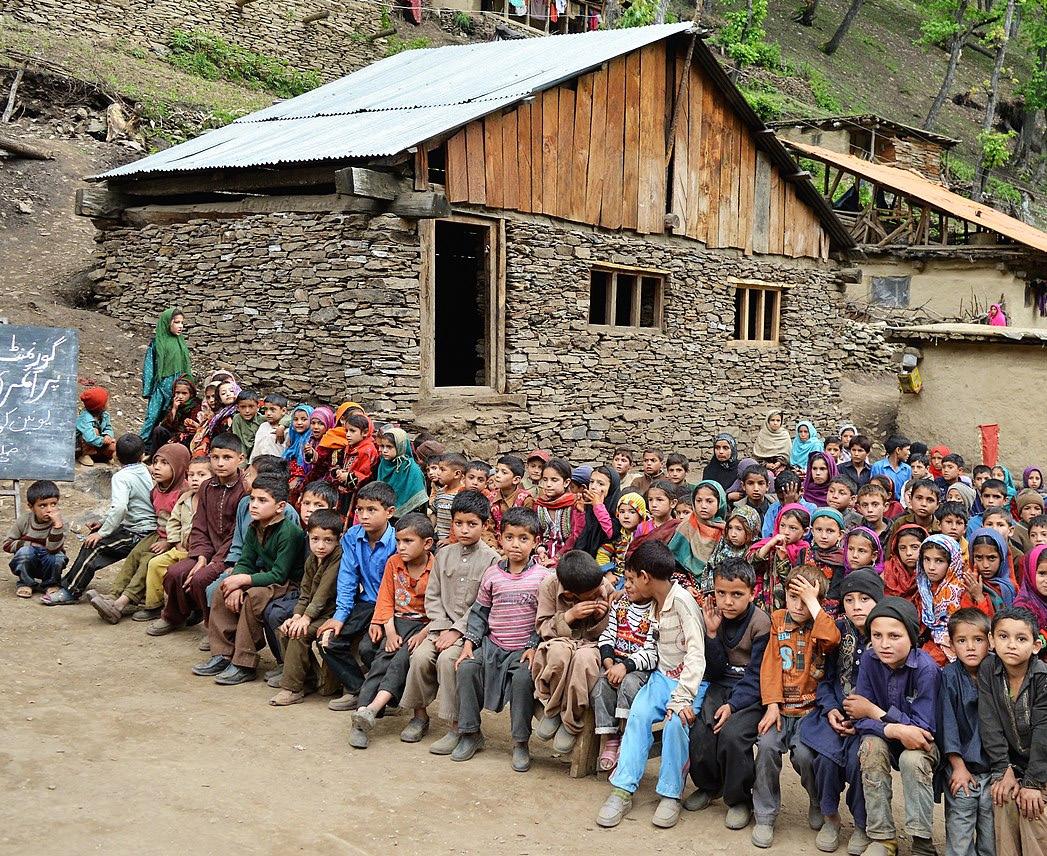
In August of 2019, the Indian government, led by prime minister Modi and the Bharatiya Janata Party (BJP), revoked Kashmir’s constitutionally protected status, sending the region into a deepened mental health crisis, with women bearing the brunt of the impact. The valley of around four million inhabitants was flooded with ~900,000 Indian troops and placed on complete lockdown for months. During this time, all internet and cell services were shut down, and strict curfews preventing residents from leaving their homes were enforced with beatings in the street and imprisonment. This amassing of troops led Kashmir to become the most militarized area in the world. Healthcare was completely inaccessible during these extended curfews, and school was entirely shut down for 31 months, meaning years of education were permanently lost. Homes were regularly raided by the army to beat and imprison people who participated in demonstrations against the government, with hundreds being held to this day,
years later. The revocation of constitutional protection marked the beginning of a campaign of ethnic suppression in the valley, enabling India to muscle Kashmiris out of employment and seize land rights to facilitate mass settling by Indians from other parts of the country. This campaign is an extension of the ongoing reign of terror against Muslims in India carried out by Hindutva extremists like Modi and the BJP, and it involves quasi-politically sanctioned lynchings, beatings, rapes, murders, and the destruction of Muslim homes and mosques around the country.
Many of these problems were hardly new to Kashmiris but now manifested with far greater severity. Kashmir had long engaged in a fight for self-determination against Indian occupation, which took a toll on the mental health of the population. An MSF report from 2015 indicated elevated rates of depression, anxiety, and PTSD, a trend similarly captured in a report almost a decade earlier. In all diagnoses, women were the most affected, with half of the female population suffering depression, 36% experiencing anxiety, and 22% grappling PTSD.
For many, their trauma is tied to generations of military violence toward their friends and families. The army poses a constant and heavy presence throughout most of Kashmir, and during crackdowns and periods of intensified confrontation, such as that of 2019, it has frequently raided Kashmiri homes, beating and arresting thousands of civilians for participating, with hundreds still remaining in custody today. Kashmiri children experienced a spike in mental health issues over the nearly three-
“FOR MANY, THEIR TRAUMA IS TIED TO GENERATIONS OF MILITARY VIOLENCE TOWARD THEIR FRIENDS AND FAMILY.”
year closure of school, which represented a major interruption to their development. Beyond the possible short-term harm of school closures, the 2015 MSF survey found that the lack of formal education was a significant predictor of anxiety, depression, and PTSD among Kashmiris. Studies have also linked the causes of the high mental health crisis rates in Kashmir to other factors, such as high rates of joblessness exacerbated by the Indian seizure of control of land permitting and government employment. As India encourages settlement of Kashmir by Indians from other parts of the country, Kashmiris have found it increasingly difficult to find secure income. Despite the prevalence of such trauma, at least since the 2006 MSF report, the problem has continued to grow, fueled by an absence of mental health resources. For a growing number of people, the absence of secure mental and physical healthcare, the lack of secure education, the lack of secure income and the constant military threat amount to an inescapable cage.
Dr. Khalid Qazi, a New York-based Kashmiri physician and associate of the World Kashmir Awareness Forum, recounted the realities of living under occupation: Healthcare, like all government operations, is secondary to securing the occupation. The entire valley is served by just one acute psychiatric institution and one outpatient mental health clinic. This is coupled with extremely unreliable transport in the many rural areas that are further interrupted by the heavy military blanket, presenting a major obstacle to most Kashmiris in need of mental health care. Ambulances transporting serious cases are forced to stop and wait for lengthy military convoys to pass in front of them. The secondclass treatment of public health was only made more pronounced with the August 2019 crackdown. “I was personally there at that time attending my brother who was sick and in a rehab center undergoing treatment for physical and mental illness,” said Qazi. “The hospital was completely evacuated and every patient had to go home.” All treatments were discontinued, and patients “could not go to health facilities, fill out prescriptions, [or] follow up with health professionals.” This experience, he noted, was not unique to the hospital his family happened to be at. It was the same at
every medical institution in Kashmir. The government shutdown of Kashmir coincided with the beginning of the COVID-19 pandemic, leaving Kashmiris with little to no resources to cope with the fallout of the virus. Even when the limited therapy and mental health clinics can finally reopen, they do little to address the massive need. They are swamped by hundreds of people seeking treatment, who must be prepared to wait the whole day for a chance to briefly speak to a counselor, with appointment waits often taking weeks. For many, seeking professional help is infeasible, so they turn to their local religious leaders who can only offer “some TLC,” as Dr. Qazi put it.
Beyond trauma and lack of access to care, another force that seems to contribute to the growth of the mental health crisis is tradition. For many, particularly in rural areas, mental health issues are traditionally highly stigmatized, coinciding with the MSF data suggesting that rural residence was a predictor of anxiety, depression, and PTSD. Dr. Qazi said that this stigma means Kashmiris often conceal their own mental illness or that of their loved ones in order to protect their social image. Mental
“BEYOND TRAUMA AND LACK OF ACCESS TO CARE, ANOTHER FORCE THATS SEEMS TO CONTRIBUTE TO THE GROWTH OF THE MENTAL HEALTH CRISIS IS TRADITION.”
issues are particularly stigmatized in women and often affect their marriage prospects. The same MSF report also identified being a woman as a predictor of those afflictions. Because women’s mental healthcare is more neglected, said Dr. Qazi, their problems have only come to run that much deeper. However, Dr. Qazi noted, since depression has become so prevalent, awareness and acceptance are slowly growing among some Kashmiris.
ABOUT THE AUTHOR

Ihsan Turk is an undergraduate student at the University of California, Berkeley interested in Public Health.
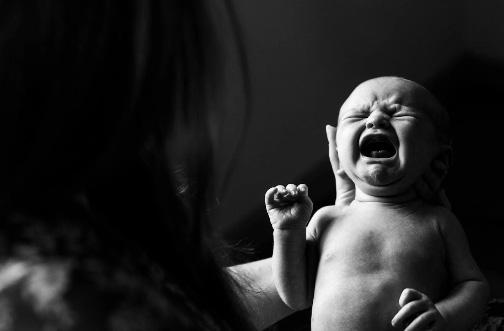
The loud chaos that echoes from the operating room. The pacing of anxious family members. The uncertainty of it all. These are common scenes from childbirth, one of the most miraculous feats a human can endure. Like a tornado, it is also one of the most unpredictable natural phenomena; regardless of preparation, there is always the possibility of complications. However, the history of human evolution may ease this uncertainty and give insight into birthing mechanisms.
Humans gained the ability to walk six million years ago. This shift was highly adaptive, improving mobility and food selection, thereby increasing reproductive success. Walking on two legs allowed our ancestors to gather food and wield tools without spending as much energy. However, this transition came with a serious birthing cost. According to fossil records, as humans gained bipedalism, our pelvic inlet became more narrow. This evolution is further complicated by the increasing size of the child’s head as humans evolved higher cognitive performance. While this made the birthing process more difficult, evolutionary “compromises” were made to ease natural births. This first is a biological adaptation that has evolved in response to selective pressures. According to a study on human birth and evolution, humans are born developmentally immature compared to other primates. This trade-off allows the pelvis to accommodate the baby’s head
size. Other “compromises” include learned behaviors and cultural practices, such as alternate birth positions. These positions (such as upright and sideway births) may seem unordinary, but they have been adopted throughout history.
Birthing positions are an essential aspect of childbirth. The most common birthing position is lying down horizontally, which is known as the “supine position.” According to a survey, 68% of births are done lying down in the United States. This position is heavily ingrained in the public eye and a mother’s birthing expectations. It is no surprise that in modern Western culture, most women give birth in a supine position. However, research has shown that this position can restrict the pelvic opening, and can lead to complications like maternal hypotension syndrome. According to a study in Tanzania, giving birth lying down can prolong labor, cause less effective contractions, and increase fetal stress and the likelihood of cesarean section. While the supine birthing position is the most common, it forces the mother to fight against gravity, therefore slowing labor. Professor Ank de Jonge, a professor of Midwifery Science at the Amsterdam University Medical Center, notes that most women didn’t start delivering on their backs until the 17th century. Before that, women would often give birth in alternate positions.
According to a review of alternative birthing positions, nonsupine positions involve upright stances like squatting. While this seems unheard of, upright births can be advantageous for many
expecting mothers. According to Dr. Jonge’s research, non-supine births were associated with fewer cuts to the perineum. Further investigation by the University of Beijing has suggested that upright births enable gravity to move the baby through the birth canal. This natural mechanism can increase cervical dilations, thereby shortening second-stage labor. Contractions were even found to be more effective and stronger in upright positions, according to a 2019 study. Consistently, the pelvic outlet increased by 20% during a squatting position. For these reasons, it’s not surprising that many women gravitate toward upright positions if they are left alone. Moreover, upright birthing positions were the norm throughout history. Before Western medicine dominated even the most rural communities, giving birth upright was culturally accepted. An Obstetrical & Gynecological Survey from 1991 documented that ancient Egyptian women would deliver by sitting on birth stools or crouching over hot stones. There are references of stone birth stools in the Bible dating back to 700 BC and similar birthing stools in 14th century France. This convention would be the norm for years until the 17th century.
So how did giving birth lying down become the standard?
It is speculated that King Louis XIV (1638-1715) found it more convenient to view births when the woman laid down, rather than on birthing stools. This shift was further solidified by François Mauriceau, a prominent physician in France during the 17th century. He proposed that the bed was the ideal place for birth as it saved the trouble of moving the mother to the bed afterward. According to a 1991 article from Archives of Diseases in Childhood, Mauiceau invented the semi-recumbent position as it offered visibility for the use of forceps. By the 18th and 19th centuries, this position spread to developing and developed countries. Slowly, the birthing norm transitioned to horizontal positions, such as the recumbent, lithotomy, or supine position. This shift evolved alongside medical technologies that standardized the supine
“WHEN A WOMAN ENTERS THE HOSPITAL, SHE WILL MOST LIKELY GIVE BIRTH LYING DOWN.”
position, which is seen as more convenient for medical workers to monitor the perineal area. This Westernization of childbirth led to a decrease in the use of vertical birthing positions which have been speculated to be advantageous.
Horizontal positions have become the norm despite evidence against its use. In fact, the World Health Organization categorized non-supine positions as a practice to be encouraged in 1996. However, the supine position continues to be the most common position in the United States at 68%. When a woman enters the hospital to give birth, she will most likely give birth lying down. The supine position is heavily ingrained in modern medicine, partly because it offers medical staff more freedom to monitor the baby. Specifically, the mother’s abdomen is more
“WHILE HOSPITAL BIRTH PROTOCOLS ARE HEAVILY CENTERED AROUND THE SUPINE POSITION, IT’S VITAL FOR THE MOTHER TO CHOOSE THE POSITION SHE WANTS.”
accessible to the caregiver in the supine position. While hospital birth protocols are heavily centered around the supine position, it’s vital for the mother to be given the opportunity to choose the type of position she wants. This is especially true as healthcare workers play a significant influence in deciding a mother’s birthing position and thereby her birth outcome. However, because the supine position is common practice, student midwives and nurses have only been taught births on the back. According to a study in Tanzania, nurse midwives generally didn’t advise women about alternative birthing positions as they themselves weren’t aware of these positions. Evidently, women’s birthing choices are often impacted by social norms and birth environment among other factors.
Birthing positions are an essential consideration for mothers and their healthcare providers. This is especially important as many women report being uninformed regarding positions. The supine position is often portrayed in popular media, which further frames it as the “only option.” Unlike our historical precedent, women should have the autonomy to choose their birthing position. Dr. Jonge emphasizes the importance of women having a free choice to decide. This is especially true as there is not one birthing position that is ideal for every woman. While the standard has undergone many metamorphoses, healthcare workers should advocate for birthing positions that the patient feels comfortable with. It’s vital for medical practitioners to be wellversed in birthing positions and be open to exploring them with expecting mothers. In doing so, they can foster a more patientcentered approach to childbirth, improve birth outcomes, and ultimately empower women’s bodily choices.
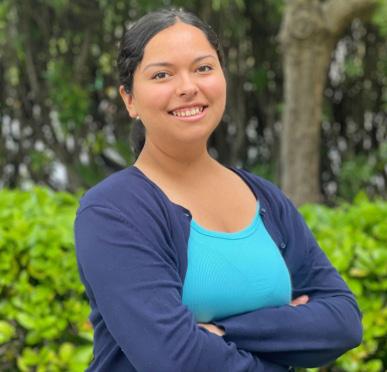
Daphney Saviotti-Orozco is a fourth-year undergraduate student majoring in Integrative Human Biology at the University of California, Berkeley. She is interested in environmental health and public health advocacy.


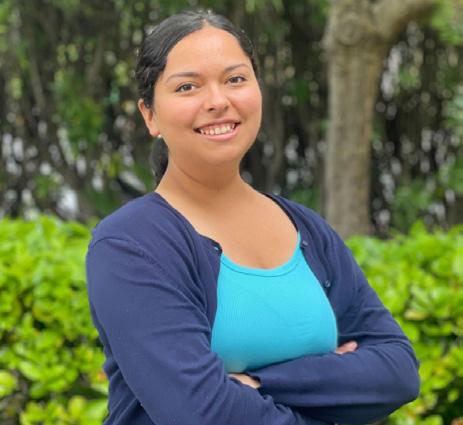



Elena is a Senior studying Public Health. During her free time, she loves sculpting, jamming to music, crocheting, and exploring new food places!
Jennifer is a Junior studying Data Science. During her free time, she loves playing video games, watching movies, and playing the piano!
Daphney is a Senior studying Integrative Human Biology. During her free time, she enjoys drawing, painting, and being outdoors!
Keerthana is a Senior studying Public Health and Molecular and Cellular Biology. During her free time, she enjoy trying new places to eat, listening to music, and watching movies with family and friends!
Tanmayi is a Senior studying Microbiology. On her free time, you can find her trying new coffee places, playing with her dog, and spending time with friends!
Trisha is a Sophomore studying Public Health and Molecular and Cellular Biology. She loves hiking, photography, traveling, and matcha!

